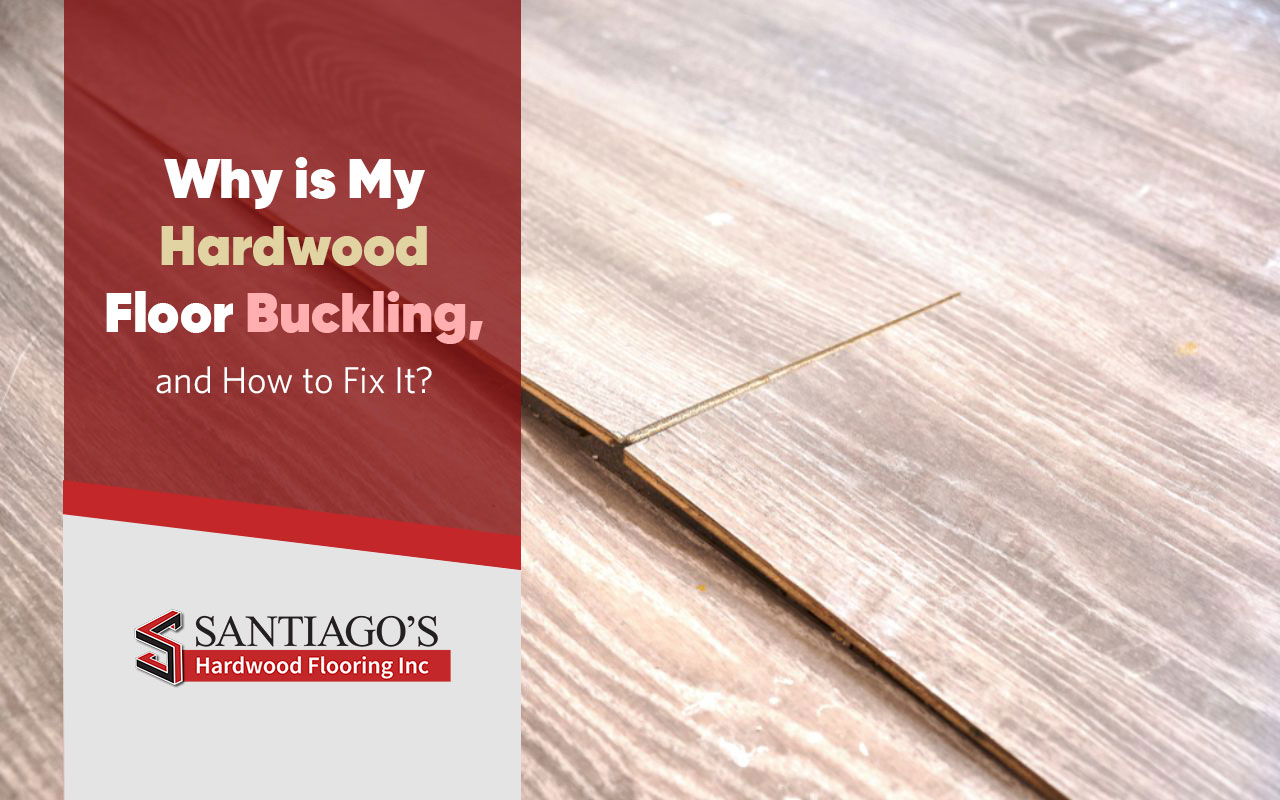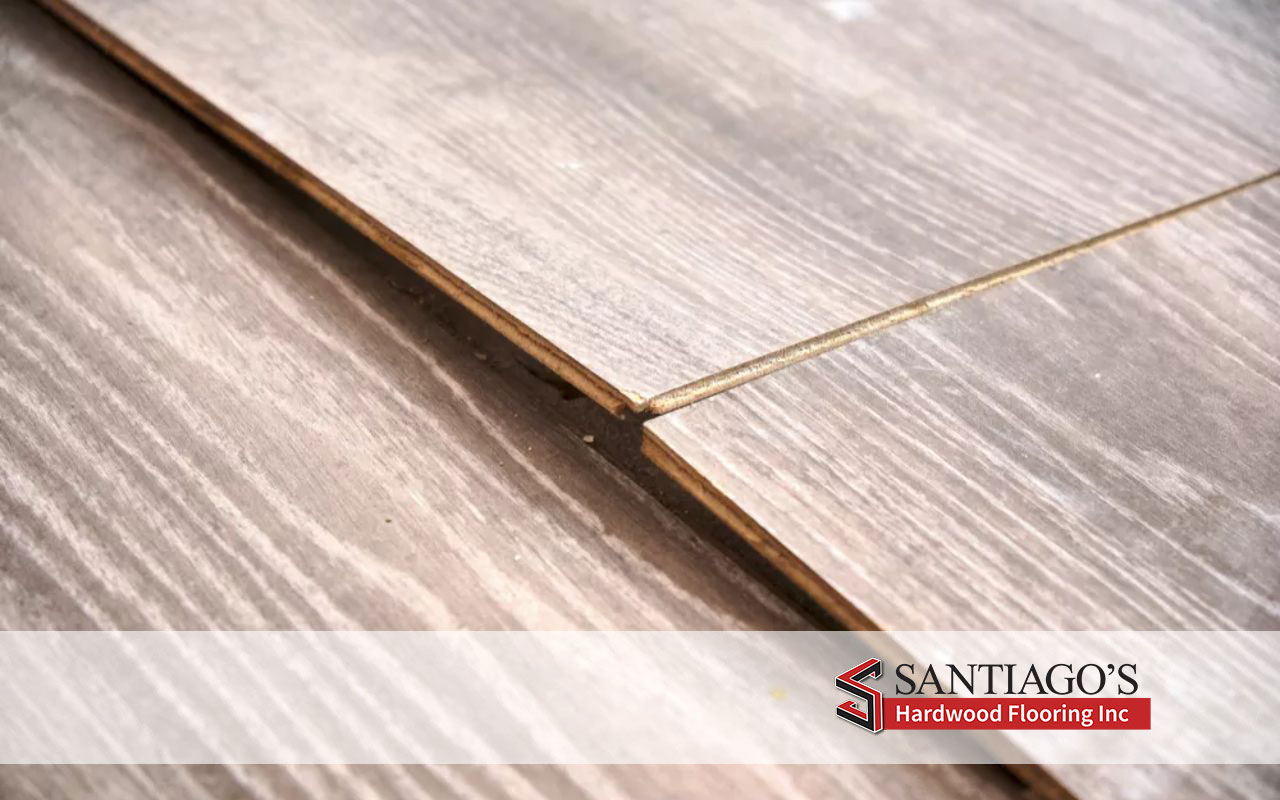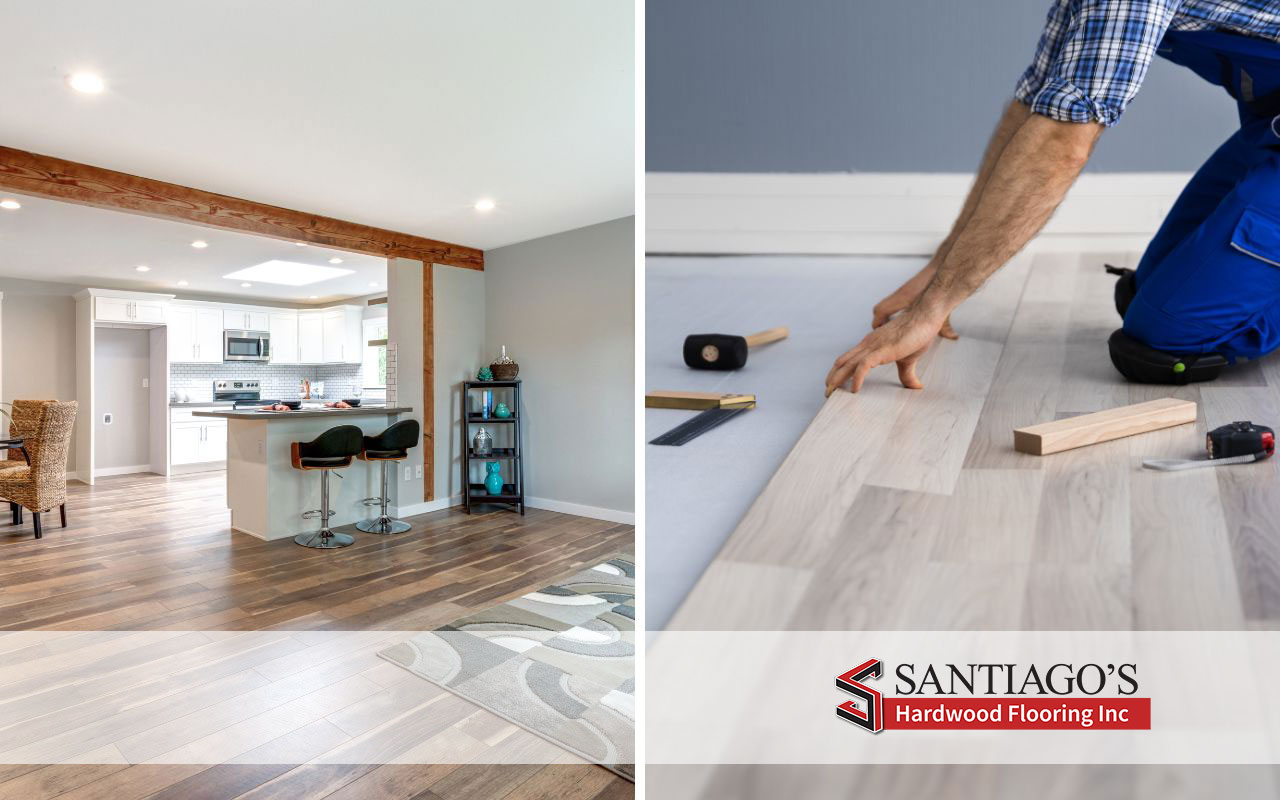
Buckling is a common issue with hardwood floors. It occurs when the wood planks lift off the subfloor due to various factors like moisture, improper installation, or other environmental conditions. In this article, we’ll explore the causes of hardwood floor buckling, how to prevent it, and the steps you can take to fix the problem.
Table of Contents
Understanding Hardwood Floor Buckling
Problems Caused By Buckling Of Hardwood Floors
Decreased lifespan of your hardwood floors
Preventing Hardwood Floor Buckling
How to Fix Buckled Hardwood Floors
Why Is my hardwood floor buckling | When to Call a Professional
Understanding Hardwood Floor Buckling

Hardwood floor buckling, also known as cupping or crowning, is a type of damage that manifests itself as a visible lifting or warping of the wood planks from the subfloor. This can range from a minor issue with just a few planks to a severe problem affecting the entire floor.
Problems Caused By Buckling Of Hardwood Floors
The consequences of hardwood floor buckling can be significant, impacting both the appearance and lifespan of your flooring. Some problems associated with buckling include:
Unsightly appearance
Buckling causes the hardwood floorboards to lift and warp, creating an uneven and distorted surface. This not only compromises the visual appeal of the floor but also makes it difficult to lay down rugs or furniture evenly. The buckled areas can be visually unappealing, making the entire space look neglected or poorly maintained.
Tripping hazards
Buckled hardwood floors create irregular surfaces, resulting in tripping hazards for occupants of the space. The raised areas can be especially dangerous for elderly individuals, children, or individuals with mobility issues. The risk of accidents and injuries increases significantly when the flooring is not level and stable.
Decreased lifespan of your hardwood floors
Buckling puts additional stress on the hardwood floorboards, leading to premature wear and tear. The constant movement and pressure can cause the finish to crack, the wood to splinter, and the boards to loosen or separate. Ultimately, this decreases the lifespan of the hardwood floors, requiring expensive repairs or even replacement much sooner than expected.
Identifying the cause of buckling and addressing it promptly is essential to avoid further damage and costly repairs.
Common Causes of Buckling
Buckling is a common problem that can occur in hardwood floors, and it can lead to several issues that affect both the aesthetics and functionality of the flooring. Understanding why hardwood floors buckle is essential in order to address the problem effectively and prevent further damage. Here are some key reasons why buckling can occur and the resulting problems it can cause:
Moisture Imbalance
One of the primary causes of hardwood floor buckling is an imbalance in moisture levels. Wood is a natural material that expands and contracts with humidity and moisture content changes. When the moisture content in the surrounding environment becomes too high, the wood absorbs excess moisture, causing it to swell and expand. Conversely, when the moisture content drops, the wood loses moisture and contracts. If the moisture imbalance is significant and rapid, it can lead to the buckling of the hardwood floorboards.
Water Damage
Exposure to excessive moisture or water can cause significant damage to hardwood floors. Common sources of water damage include leaks from plumbing fixtures, flooding, spills, or improper cleaning methods. When water seeps into the wood, it can cause the floorboards to swell and warp, leading to buckling. If not addressed promptly, water damage can weaken the structural integrity of the flooring and accelerate the buckling process.
Improper Installation
Improper installation techniques can contribute to hardwood floor buckling. When floorboards are not acclimated properly to the environment before installation, they may expand or contract after installation, resulting in buckling. Additionally, inadequate spacing between floorboards or failure to leave expansion gaps around the perimeter of the room can restrict the natural movement of the wood, leading to buckling.
Poor Subfloor Condition
The subfloor is the structural layer beneath the hardwood flooring. If the subfloor is in poor condition, it can lead to buckling problems. Here are a few subfloor-related issues that can cause buckling. A damaged or uneven subfloor can cause hardwood floor planks to buckle over time.
Inadequate Acclimation
Acclimation refers to the process of allowing hardwood flooring to adjust to the moisture content and environmental conditions of its intended installation area. When hardwood boards are not adequately acclimated before installation, it can result in buckling issues.
Preventing Hardwood Floor Buckling

Prevention is always better than cure. Here are some tips to help you prevent hardwood floor buckling:
- Control Moisture Levels: Maintain a consistent indoor humidity level of 35-55% to minimize wood expansion and contraction.
- Proper Installation: Follow the manufacturer’s guidelines for installation, paying close attention to expansion gaps, nailing techniques, and subfloor preparation.
- Ensure Adequate Acclimation: Allow the wood flooring to acclimate to the room’s temperature and humidity levels for at least 48 hours before installation.
- Inspect and Repair Subfloor: Regularly inspect your subfloor for damage or moisture issues and address them promptly.
How to Fix Buckled Hardwood Floors
Depending on the severity of the buckling, there are several approaches to fixing the issue:
- Address the Underlying Cause: First and foremost, identify and resolve the root cause of the buckling, such as fixing water leaks or adjusting humidity levels.
- Allow the Floor to Settle: In some cases, minor buckling may resolve once the underlying issue is addressed and the floor has had time to settle.
- Sanding and Refinishing: If the buckling is moderate and the wood hasn’t been severely damaged, sanding and refinishing the affected area can restore the floor’s appearance.
- Replacement: In severe buckling or irreparable damage, the affected planks may need to be replaced entirely.
Why Is my hardwood floor buckling | When to Call a Professional
While some minor buckling issues can be addressed through DIY methods, knowing when to call in a professional is essential. A hardwood floor expert can assess the extent of the damage, identify the underlying cause, and provide the most effective solution. If you need more clarification about tackling the problem yourself or if the issue persists despite your efforts, it’s best to consult a professional for help. Get in touch with us today for a free estimate!
Protecting Your Hardwood Floors from Buckling
To sum up, understanding the causes of hardwood floor buckling and taking preventive measures can help you maintain your floors’ beauty and longevity. If you encounter buckling, promptly address the issue to avoid further damage and consider seeking professional assistance. Get in touch with us today for a free estimate of your hardwood flooring needs!
